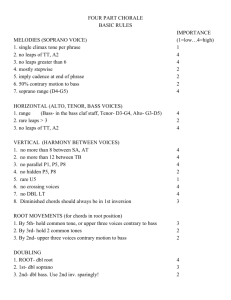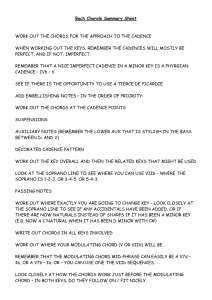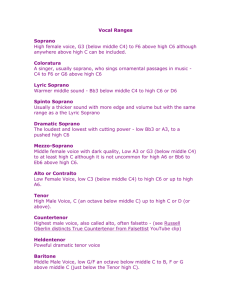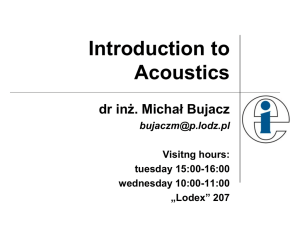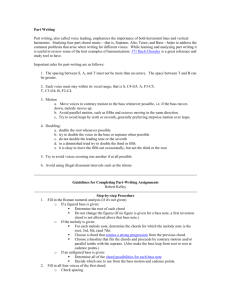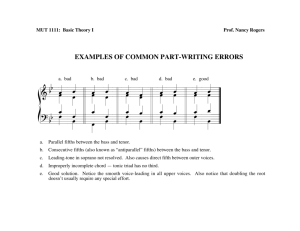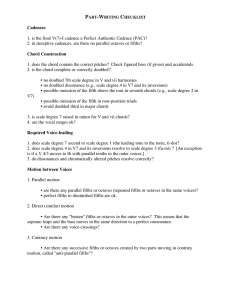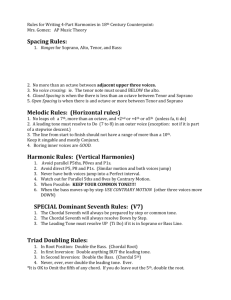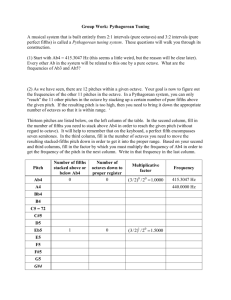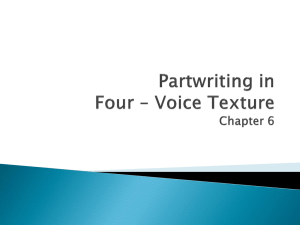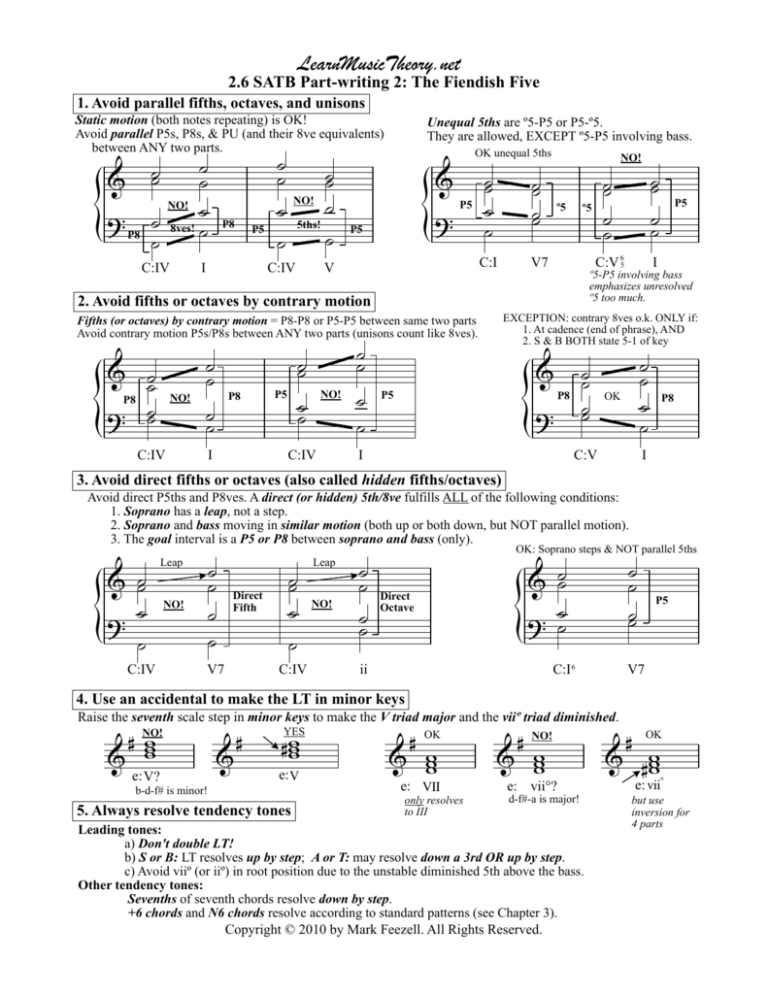
LearnMusicTheory.net
2.6 SATB Part-writing 2: The Fiendish Five
1. Avoid parallel fifths, octaves, and unisons
Static motion (both notes repeating) is OK!
Avoid parallel P5s, P8s, & PU (and their 8ve equivalents)
between ANY two parts.
P8
NO!
8ves!
C:IV
P8
P5
I
NO!
5ths!
C:IV
Unequal 5ths are º5-P5 or P5-º5.
They are allowed, EXCEPT º5-P5 involving bass.
P5
V
2. Avoid fifths or octaves by contrary motion
OK unequal 5ths
P5
C:I
V7
P8
NO!
C:IV
P8
I
P5
NO!
C:IV
º5
C:V 6%
P5
I
º5-P5 involving bass
emphasizes unresolved
º5 too much.
EXCEPTION: contrary 8ves o.k. ONLY if:
1. At cadence (end of phrase), AND
2. S & B BOTH state 5-1 of key
Fifths (or octaves) by contrary motion = P8-P8 or P5-P5 between same two parts
Avoid contrary motion P5s/P8s between ANY two parts (unisons count like 8ves).
º5
NO!
P5
I
3. Avoid direct fifths or octaves (also called hidden fifths/octaves)
P8
OK
C:V
P8
I
Avoid direct P5ths and P8ves. A direct (or hidden) 5th/8ve fulfills ALL of the following conditions:
1. Soprano has a leap, not a step.
2. Soprano and bass moving in similar motion (both up or both down, but NOT parallel motion).
3. The goal interval is a P5 or P8 between soprano and bass (only).
Leap
C:IV
NO!
Direct
Fifth
V7
C:IV
Leap
NO!
OK: Soprano steps & NOT parallel 5ths
Direct
Octave
ii
4. Use an accidental to make the LT in minor keys
C:I ^
V7
Raise the seventh scale step in minor keys to make the V triad major and the viiº triad diminished.
NO!
e:V?
YES
e: V
b-d-f# is minor!
5. Always resolve tendency tones
OK
e: VII
only resolves
to III
NO!
e: vii°?
d-f#-a is major!
Leading tones:
a) Don't double LT!
b) S or B: LT resolves up by step; A or T: may resolve down a 3rd OR up by step.
c) Avoid viiº (or iiº) in root position due to the unstable diminished 5th above the bass.
Other tendency tones:
Sevenths of seventh chords resolve down by step.
+6 chords and N6 chords resolve according to standard patterns (see Chapter 3).
Copyright © 2010 by Mark Feezell. All Rights Reserved.
P5
OK
e: vii°
but use
inversion for
4 parts

